Archaeologists uncover northern castle wall, 19th-century flood parapet in Szeged riverfront dig
Archaeologists in Szeged have uncovered remnants of the city’s historic northern castle wall and part of a 19th-century flood-protection parapet during excavation work tied to a major riverfront reconstruction project.
The excavation, which began this week amid sweltering heat, is part of preparatory work to upgrade utility lines beneath the riverfront road. City officials say the broader project will rebuild and green the embankment, whether or not European Union funding materializes.
Deputy Mayor Sándor Nagy said the city has revised its goals for the riverfront project. While the original plan focused on “humanizing” the riverbank for pedestrians and recreation, officials now see reducing the urban heat-island effect as an even higher priority.
“Anyone out here in this heat will see firsthand how severe the heat-island effect is,” Nagy told reporters during a press briefing on site yesterday.
Archaeologists found the remains of the northern castle wall on the first day of the dig — an expected discovery given previous mapping of the site. Excavations of Szeged’s historic fortress have been ongoing for decades, often linked to construction projects. In 2012, crews uncovered the southern gate during preparation for a new parapet.
While the castle wall dates back centuries, its destruction was triggered by the catastrophic 1879 flood that devastated Szeged. Officials decided in the following years to demolish most of the walls.
The surprise in this latest dig came when archaeologists found an arched foundation section of the parapet built after the 1879 flood. Csilla Molnár, lead archaeologist from the Móra Ferenc Museum, said the structure isn’t old enough to qualify as a true archaeological artifact but remains valuable for local history.
Records suggest the original parapet was built at a significantly lower height than modern flood defenses. While it likely protected the city up to about 8 meters, today’s levee system must handle levels above 10 meters.
Despite scorching temperatures, archaeologists are working eight-hour days to complete the excavation quickly so reconstruction can resume. Officials hope to reopen the closed section of the riverfront by mid-August.
Excavations will continue near the round bastion in coming days. After documentation, the remains will be reburied for preservation. Nagy said the area is under video surveillance to protect the site from vandalism and ensure public safety along the popular riverfront.
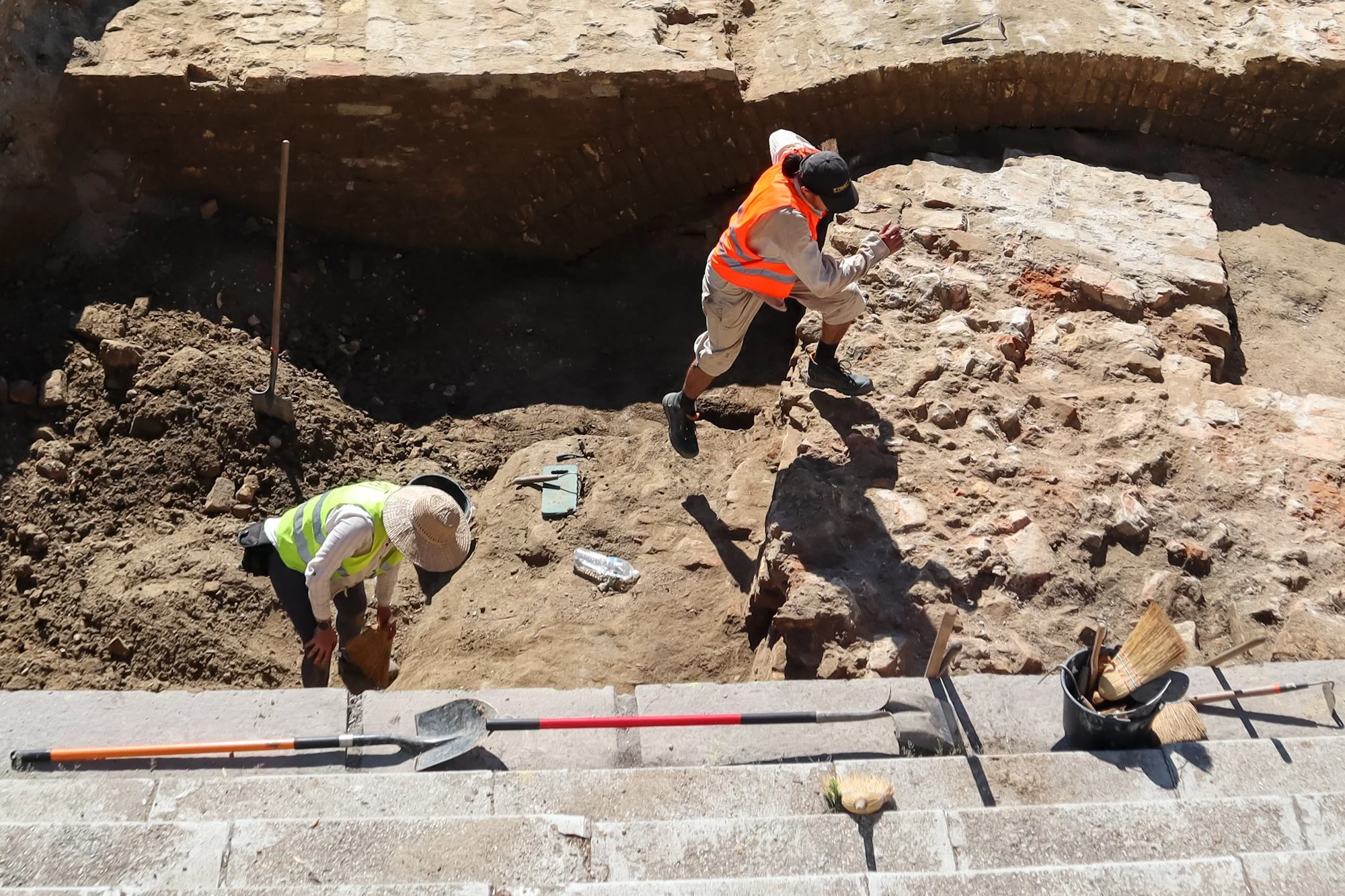
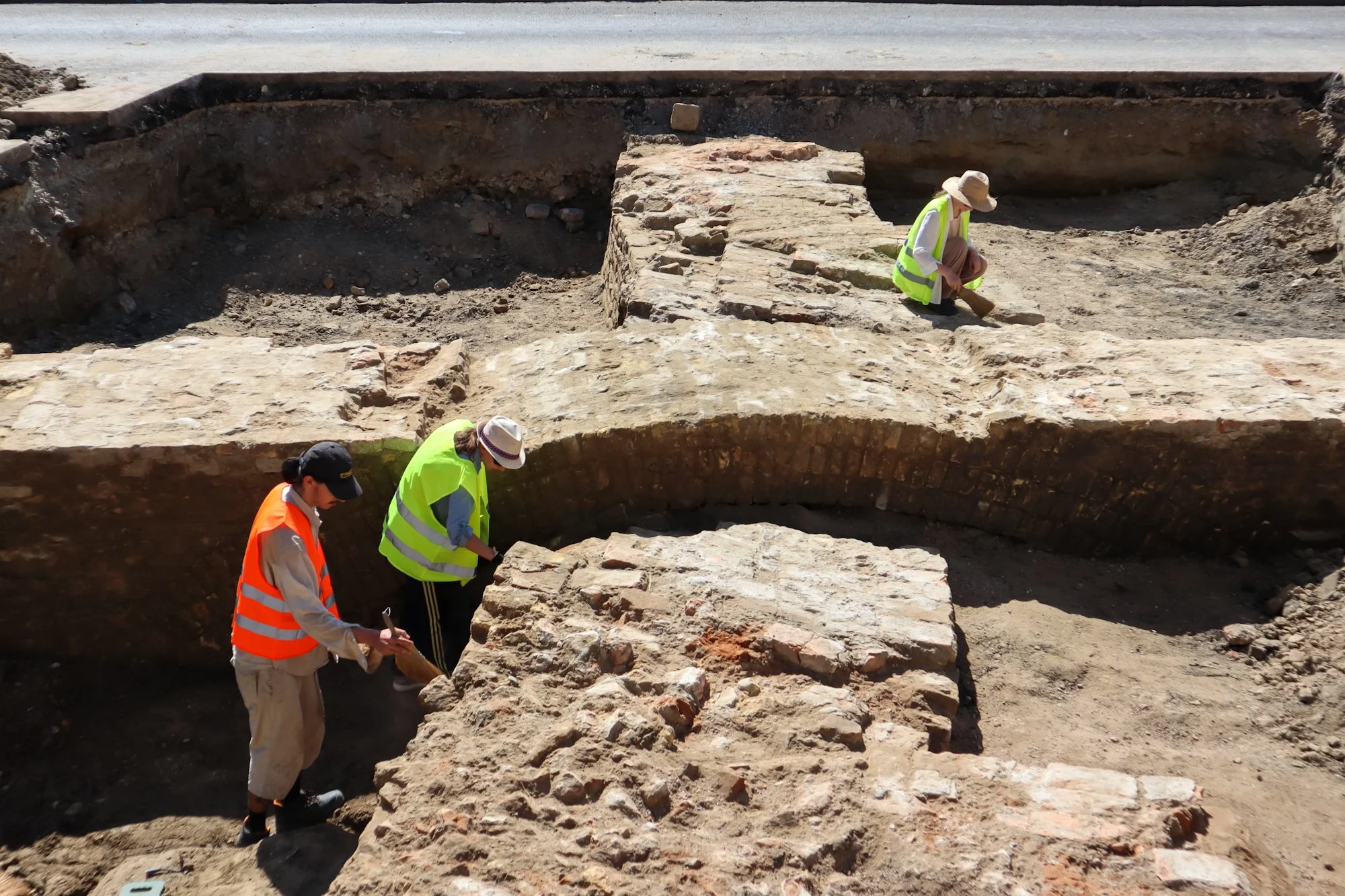
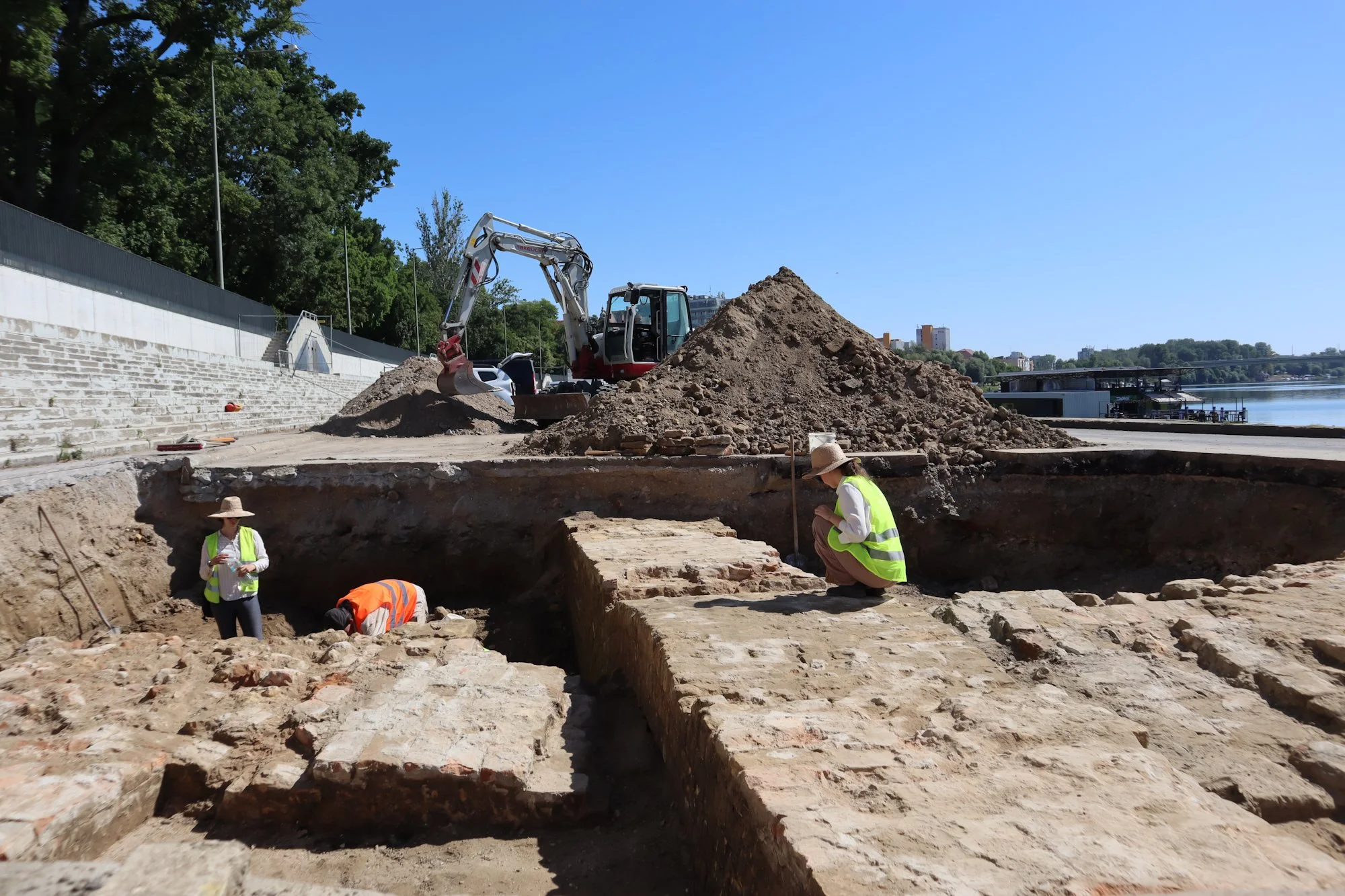
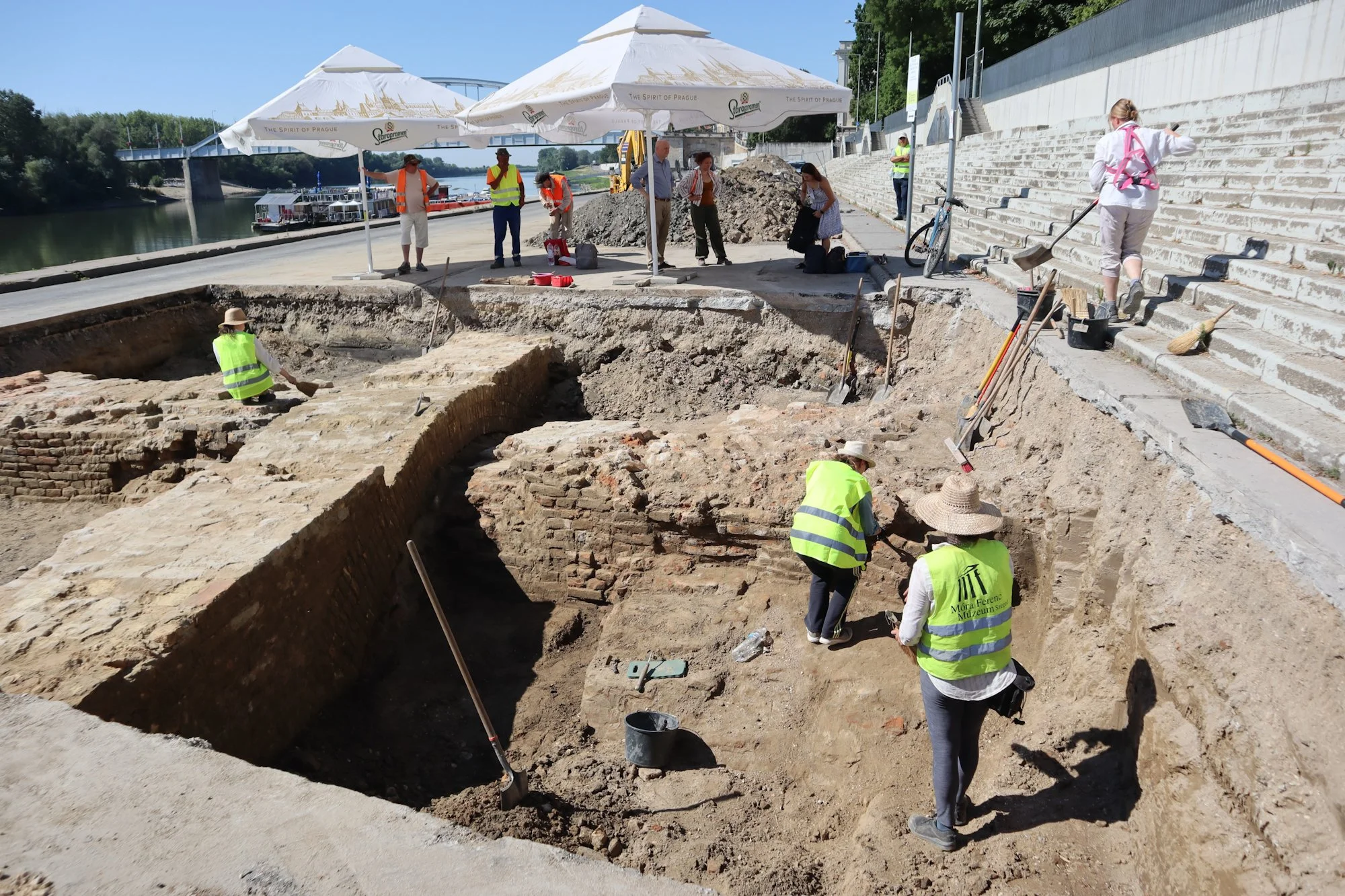
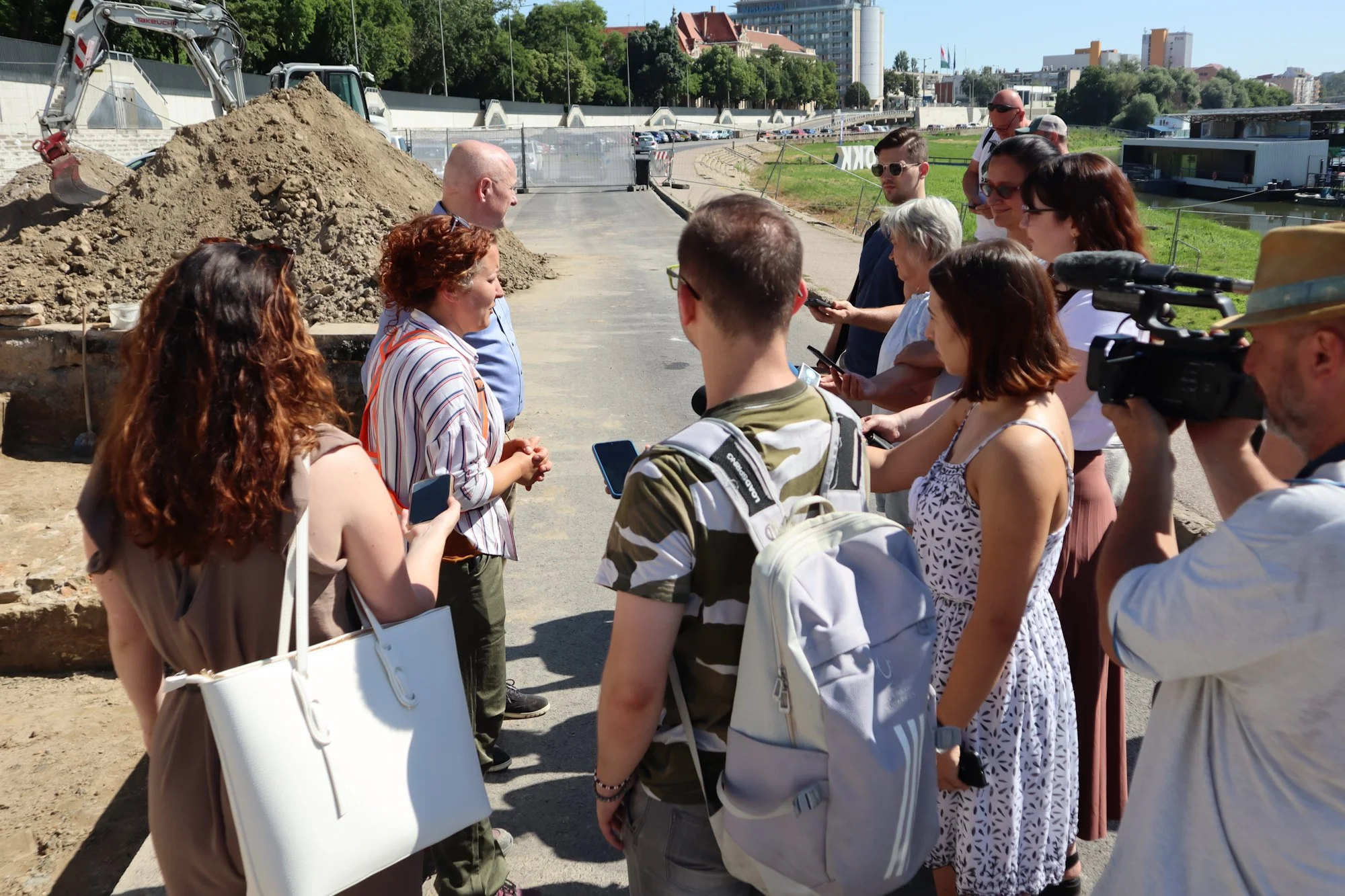
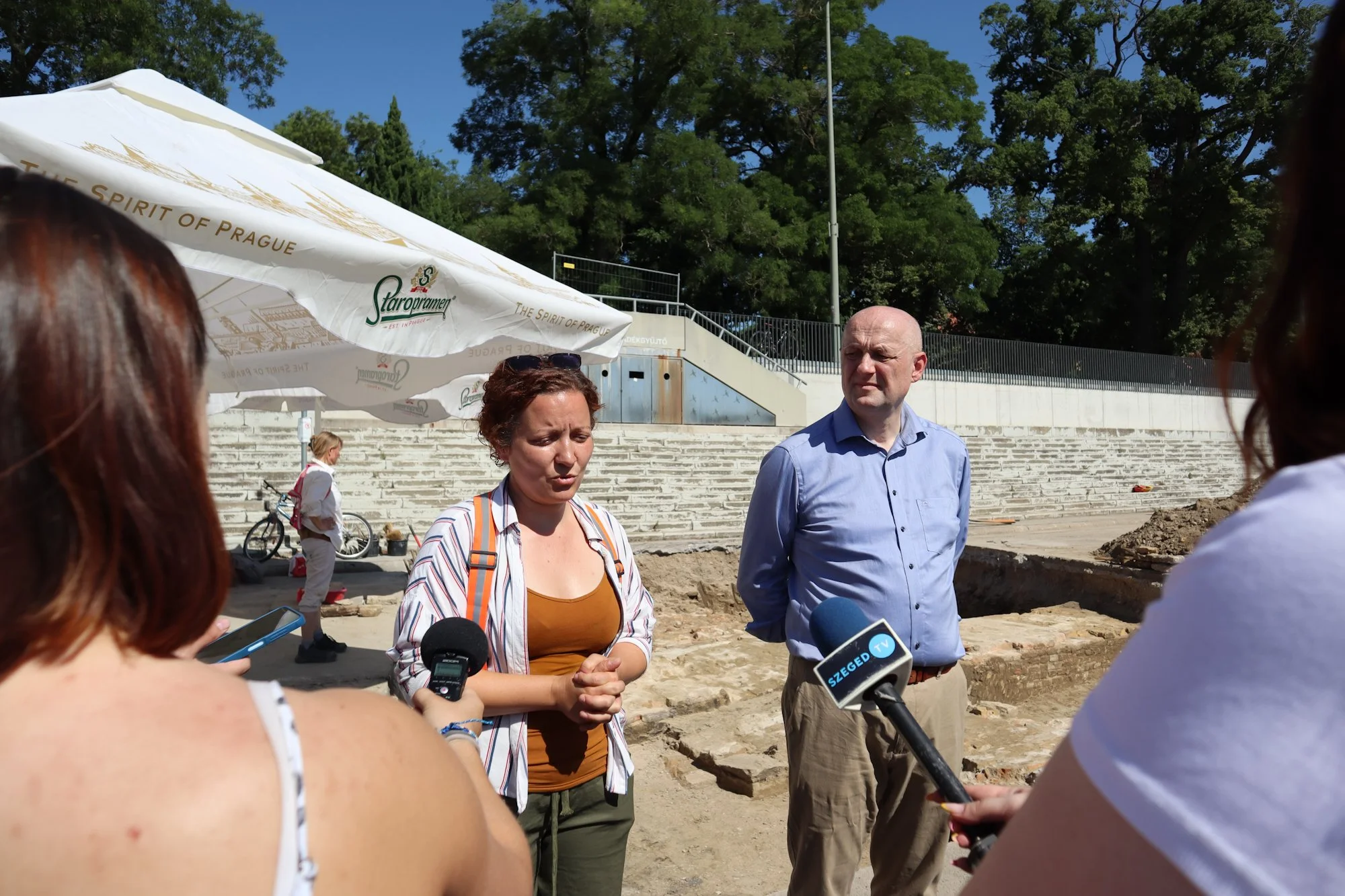
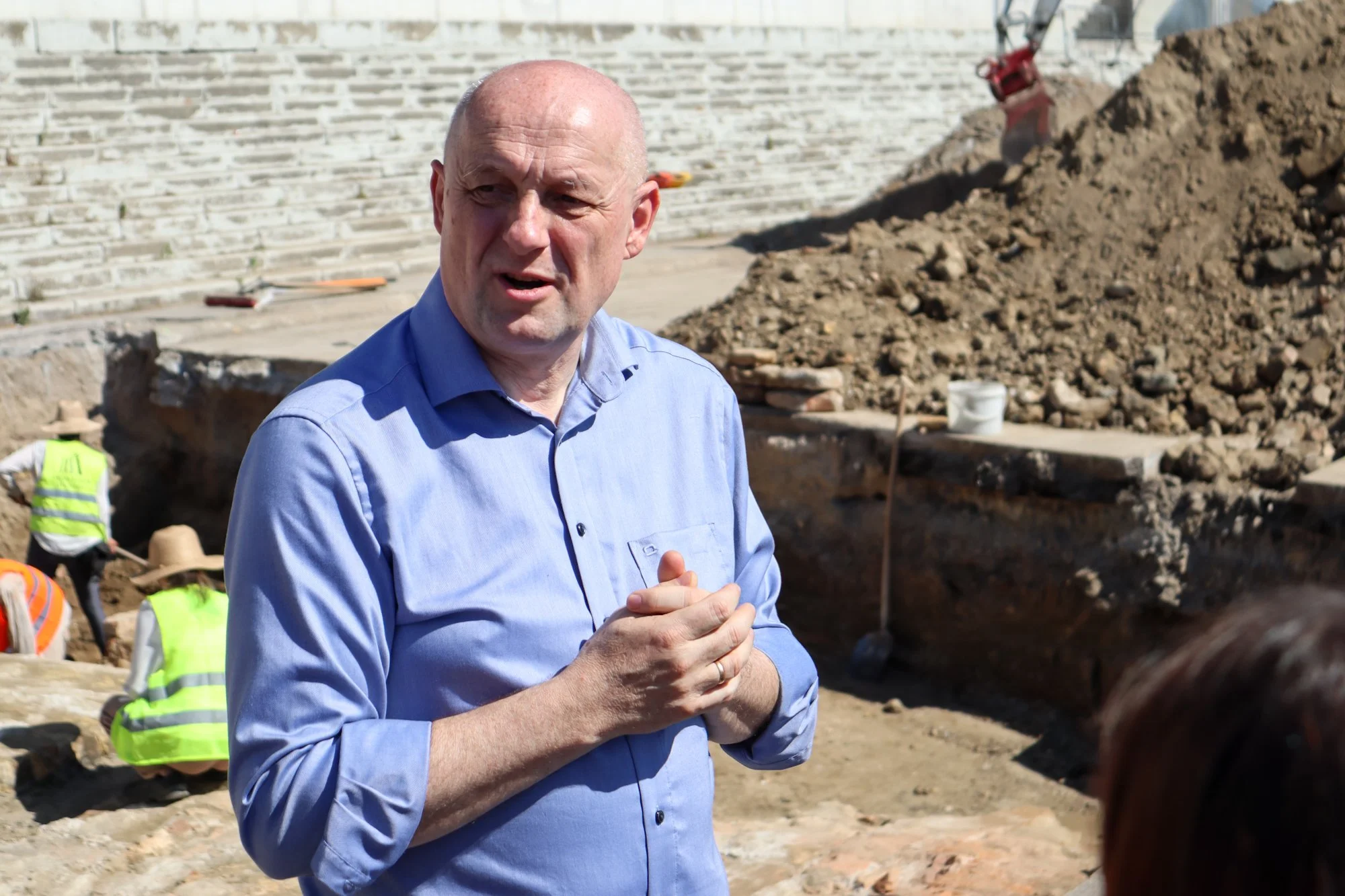
Photos: Szilvia Molnar / Szegedify